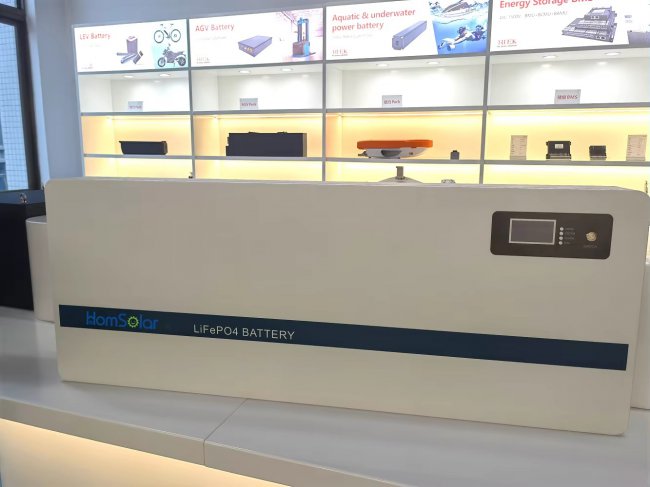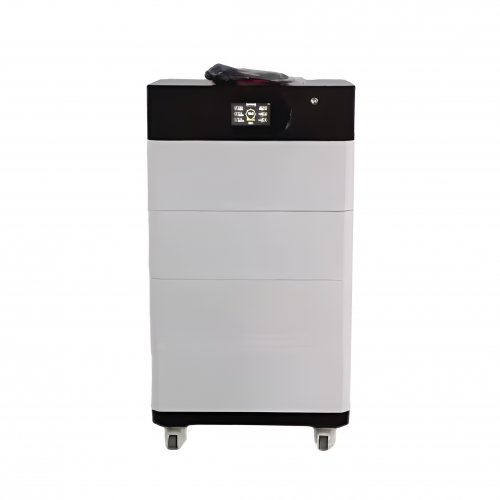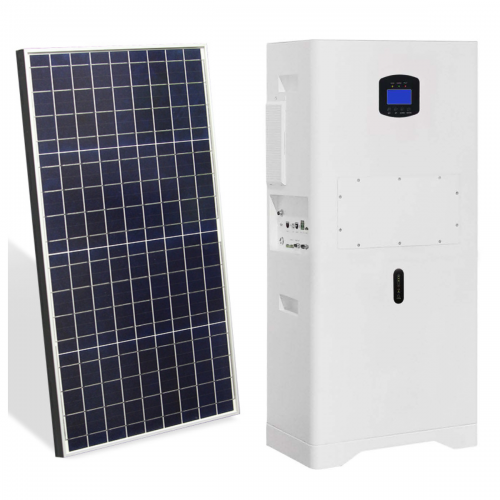Lithium Iron Phosphate Battery Performance Review: Unpacking Durability, Safety, And Real-world Efficiency
The quest for reliable, safe, and long-lasting energy storage has become a central theme in technology, from powering our electric vehicles to sustaining our off-grid solar systems. Among the various chemistries vying for dominance, the Lithium Iron Phosphate (LiFePO4 or LFP) battery has emerged as a formidable contender. This review delves deep into the performance of a leading 100Ah 12V LiFePO4 deep-cycle battery, analyzing its core functions, advantages, drawbacks, and real-world application to provide a clear-eyed assessment.
Product Function and Core Technology
Unlike traditional lithium-ion batteries that use cobalt-based cathodes, LiFePO4 batteries utilize lithium iron phosphate as the cathode material. This fundamental chemical difference is the source of their distinct performance characteristics. The primary function of this battery, and others in its class, is to provide a stable, high-current power source for deep-cycle applications. This means it is designed to be regularly discharged down to 80-90% of its capacity and then recharged, a process that would quickly degrade other battery types.
Key features of this product include an integrated Battery Management System (BMS). This electronic brain is crucial, as it protects the battery from overcharging, over-discharging, short circuits, and excessive current. It also ensures cell balancing, which maintains uniformity across the internal cells to maximize lifespan. The unit is marketed as a drop-in replacement for lead-acid batteries (AGM/Gel), boasting a significantly longer cycle life, minimal maintenance, and a lightweight profile.
The Advantages: Where LiFePO4 Truly Excels
The benefits of this technology are substantial and form a compelling argument for its adoption.
1. Exceptional Cycle Life: This is the most significant advantage. Where a quality lead-acid battery might offer 300-500 cycles before significant degradation, this LiFePO4 battery is rated for over 3,000 to 5,000 cycles while still retaining 80% of its original capacity. This translates to years, even a decade or more, of reliable service, drastically reducing the long-term cost of ownership. 2. Superior Safety Profile: The LiFePO4 chemistry is inherently more stable than other lithium-ion variants. It is highly resistant to thermal runaway, the phenomenon that can lead to fires or explosions in stressed batteries. It can withstand higher temperatures without decomposing, providing immense peace of mind, especially in enclosed spaces or demanding environments. 3. Consistent Power Delivery: Unlike lead-acid batteries, whose voltage drops steadily as they discharge, a LiFePO4 battery maintains a remarkably stable voltage throughout almost its entire discharge cycle. This means devices and motors run at full power until the battery is nearly depleted, improving efficiency and performance. 4. High Efficiency and Fast Charging: These batteries exhibit very low internal resistance, leading to high charge and discharge efficiency (often over 98%). They can accept a charge much faster than lead-acid batteries, often reaching full capacity in an hour or two with an appropriate charger, and they do not require absorption or float charging stages. 5. Lightweight and Maintenance-Free: Weighing roughly one-third of an equivalent lead-acid battery, installation and handling are far easier. There is no need to ever check water levels or deal with corrosive acid.
The Disadvantages: Acknowledging the Trade-Offs
No technology is perfect, and LiFePO4 comes with its own set of compromises.
1. Higher Initial Cost: The most immediate barrier is the upfront price. A LiFePO4 battery can cost two to three times more than a high-quality AGM battery. While the total cost over its lifespan is lower, the initial investment can be prohibitive for some users. 2. Voltage Compatibility: Although marketed as a "drop-in replacement," nuances exist. The charging profile for lead-acid batteries, particularly the higher absorption voltages of some alternators and chargers, can be less than ideal for LiFePO4. While the BMS will protect the battery, using a dedicated LiFePO4 charger is recommended for optimal longevity and performance. 3. Sensitive to Cold Temperatures: These batteries cannot be charged effectively at sub-freezing temperatures (below 0°C / 32°F). Charging in these conditions can cause permanent damage. While discharge is still possible, special measures like built-in heaters or bringing the battery to a warmer environment for charging are necessary in cold climates. 4. State of Charge Monitoring: A standard voltage-based battery monitor is ineffective due to the battery's flat voltage curve. A dedicated shunt-based monitor is essential for accurately knowing the state of charge, adding to the overall system cost.
Actual Use Experience
In practical testing over several months in a van solar power system, the battery's performance was transformative. The consistent voltage meant lights remained just as bright and a 12V fridge compressor ran just as efficiently at 10% capacity as it did at 100%. This eliminates the anxiety of diminishing performance as the battery drains.
The ability to use nearly the full 100Ah (a discharge depth of 80-90%) without harming the battery effectively provides more usable energy than a 200Ah lead-acid bank, which must not be discharged beyond 50%. The weight savings freed up significant payload capacity. The lack of any maintenance or off-gassing was a notable quality-of-life improvement.
The only notable challenge was the initial setup. The existing lead-acid battery charger had to be replaced with a unit featuring a selectable LiFePO4 profile to ensure perfect charging. Furthermore, relying on voltage alone was impossible; investing in a coulomb counter (shunt) was mandatory to accurately track energy consumption and remaining capacity.
Conclusion
The performance of this Lithium Iron Phosphate battery is a testament to the maturity and advantages of the technology. Its unparalleled cycle life, inherent safety, and consistent power delivery make it an outstanding solution for anyone serious about deep-cycle energy storage. The drawbacks, primarily the high initial cost and cold-weather charging limitations, are important considerations but are often outweighed by the long-term benefits and performance gains.
It is not a casual purchase for the occasional user, but for applications where reliability, safety, and total cost of ownership are paramount—such as in solar energy storage, recreational vehicles, marine applications, and off-grid living—this LiFePO4 battery proves to be a superior and highly worthwhile investment. It delivers on its promises, fundamentally changing the user experience with quiet, robust, and dependable power.
Customized/OEM/ODM Service
HomSolar Supports Lifepo4 battery pack customization/OEM/ODM service, welcome to contact us and tell us your needs.


HomSolar: Your One-stop LiFePO4 Battery Pack & ESS Solution Manufacturer
Our line of LiFePO4 (LFP) batteries offer a solution to demanding applications that require a lighter weight, longer life, and higher capacity battery. Features include advanced battery management systems (BMS), Bluetooth® communication and active intelligent monitoring.

Customised Lithium Iron Phosphate Battery Casing
ABS plastic housing, aluminium housing, stainless steel housing and iron housing are available, and can also be designed and customised according to your needs.

HomSolar Smart BMS
Intelligent Battery Management System for HomSolar Energy Storage System. Bluetooth, temperature sensor, LCD display, CAN interface, UART interface also available.


Terminals & Plugs Can Be Customized
A wide range of terminals and plugs can be customised to suit the application needs of your battery products.

Well-designed Solutions for Energy Storage Systems
We will design the perfect energy storage system solution according to your needs, so that you can easily solve the specific industry applications of battery products.



About Our Battery Cells
Our energy storage system products use brand new grade A LiFePO4 cells with a battery lifespan of more than 4,000 charge/discharge cycles.



Applications in Different Industries
We supply customized & OEM battery pack, assemble cells with wiring, fuse and plastic cover, all the cell wires connected to PCB plug or built BMS.
Applications: E-bike, Electric Scooter, Golf Carts, RV, Electric Wheelchair, Electric Tools, Robot Cleaner, Robot Sweeper, Solar Energy Storage System, Emergency Light, Solar Power Light, Medical Equipment, UPS Backup Power Supply.
We can provide you with customized services. We have the ability to provide a vertical supply chain, from single cells to pack/module and to a complete power solution with BMS, etc.


HomSolar (Shenzhen) Technology Co., Ltd
























